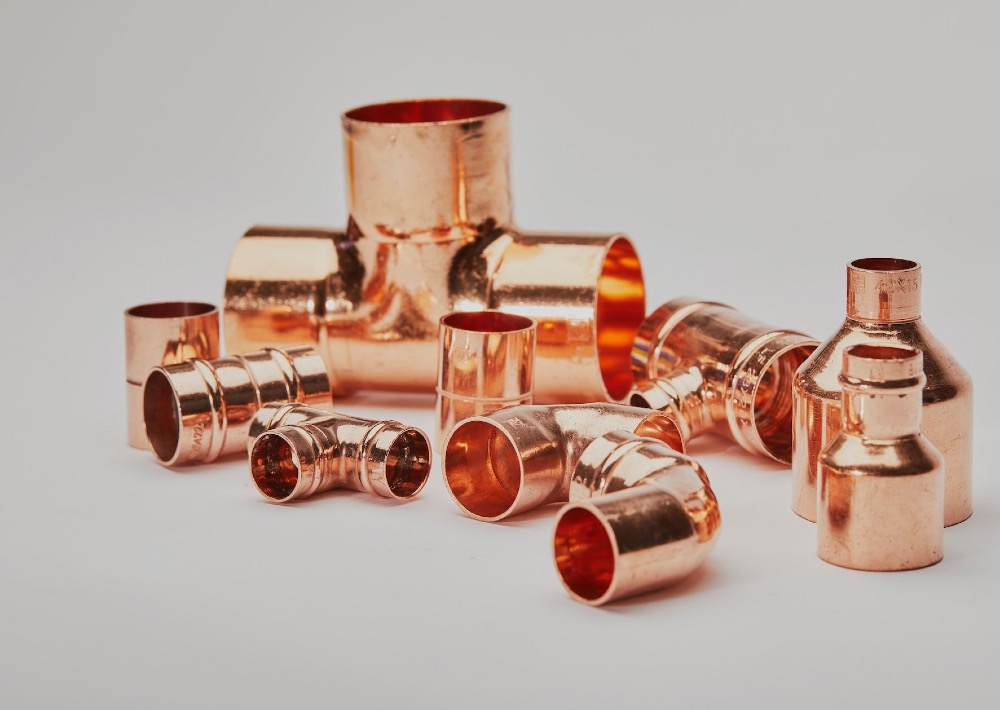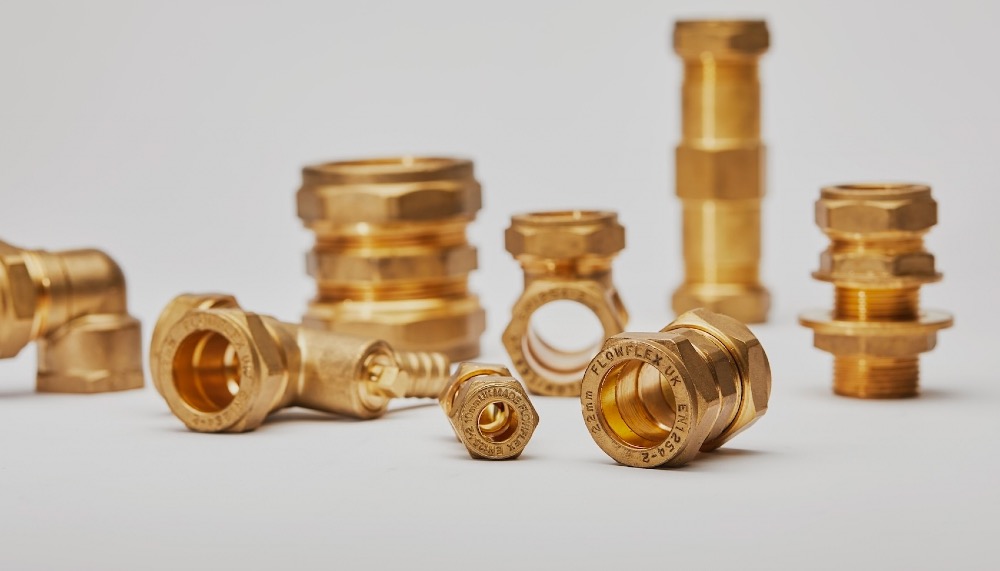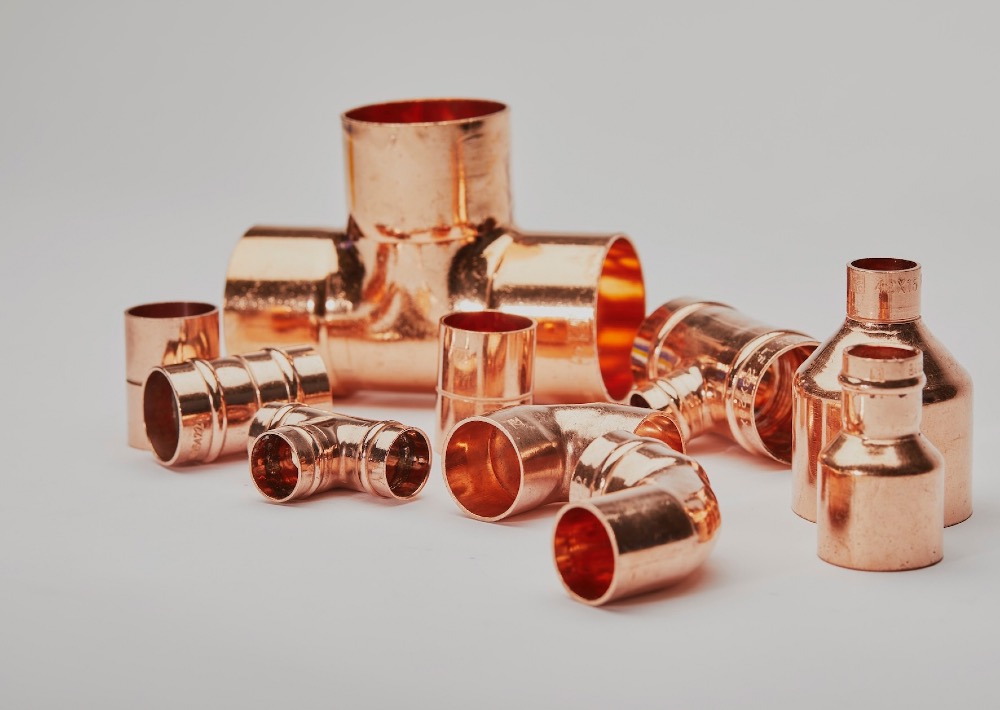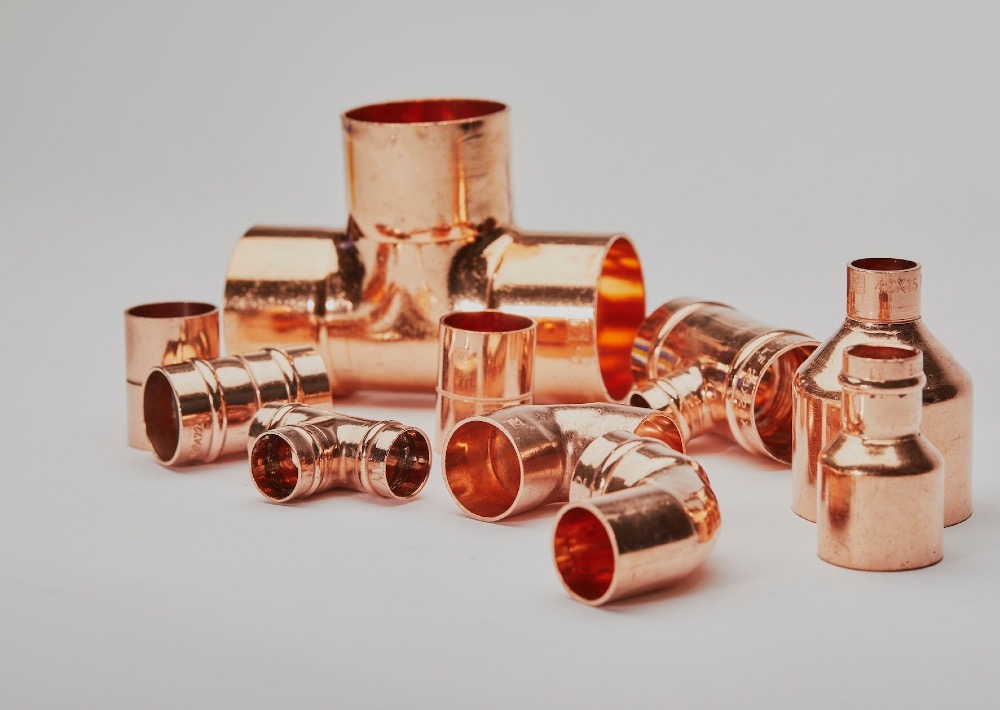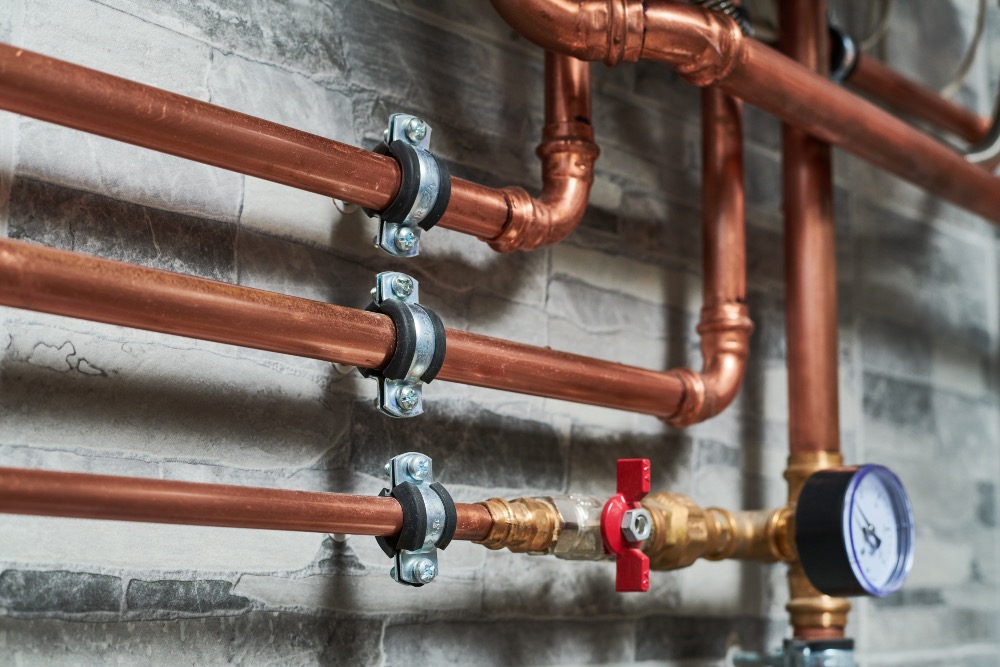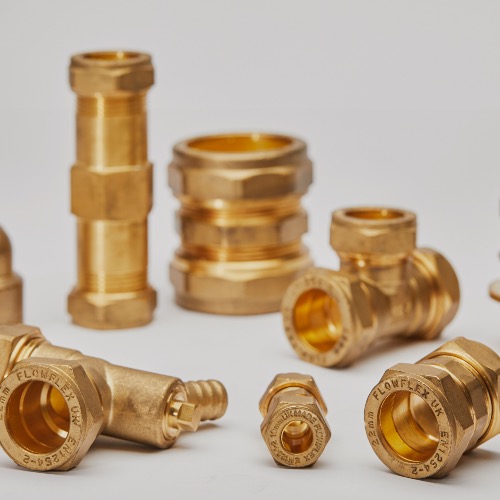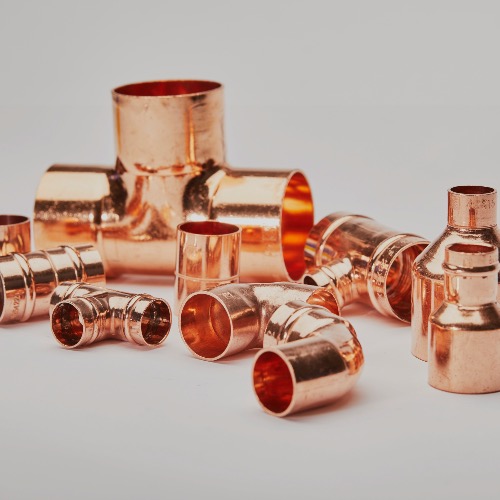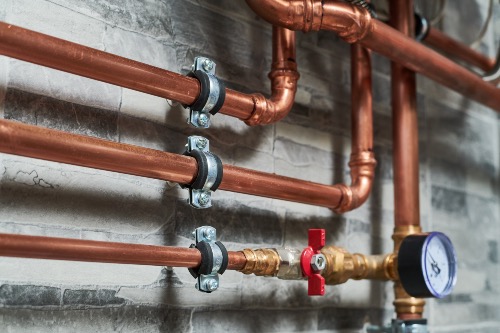Last Updated: Tuesday, 13th February 2024
Choosing the Best Copper Pipe Fittings for Your Project
Copper fittings are vital for plumbing systems, ensuring secure connections between pipes and fixtures. With various fitting types available, choosing the right one for your project can be daunting. This guide will explore different copper fittings, including end feed, solder ring, push fit, press fit, and compression fittings. We'll discuss their features, benefits, and applications, helping you make an informed decision for your plumbing needs. Let's dive in and explore the options for your project.
Compression Fittings
Compression fittings are a type of mechanical joint used to connect two pipes or a pipe to a fixture or valve. The joint consists of three main components: a compression nut, a compression ring (often called the Olive), and a compression seat (body of the fitting). When the nut is tightened, the olive is compressed against the pipe, creating a tight and leak-proof seal.

Benefits of Compression Fittings
Ease of Installation: Compression fittings are easy to install, requiring no special tools or skills. Simply slide the nut and olive onto the pipe, insert the pipe into the fitting, and tighten the nut.
Pipe Compatibility: Compression fittings can connect to multiple types of pipe, including Copper, Plastic, and Steel, making them a versatile choice for various plumbing applications.
Heat-Free Installation: Unlike soldered or brazed joints, compression fittings do not require heat for installation, making them a popular choice for heat-free construction sites or DIY projects.
Can be Installed in Wet Conditions: Compression fittings can be installed in wet conditions, making them ideal for repairs or installations where it is not possible to shut off the water supply.
Reusability: Compression fittings can be easily removed and reused, making them a cost-effective option for temporary installations, installations that require regular maintenance, or for projects where adjustments may be needed.
End Feed Fittings
End feed fittings are a type of copper fitting used to join copper pipes. They work through the process of capillary action, where solder is drawn into the gap between the fitting and the pipe to create a strong, leak-proof joint. End feed fittings are available in a wide range of sizes and shapes, including elbows, tees, and couplings, making them suitable for various plumbing applications.
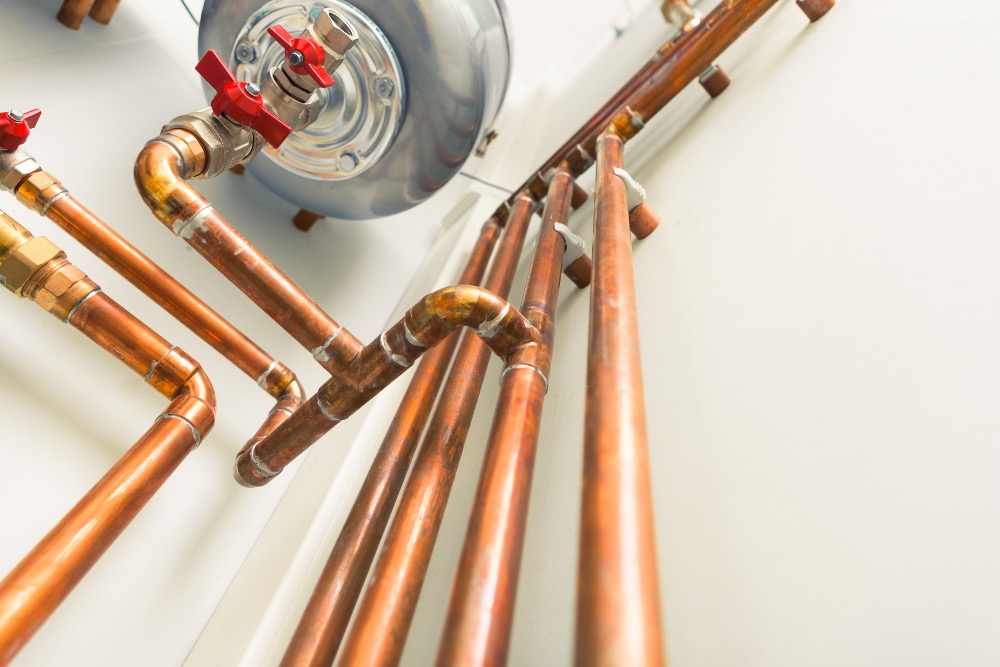
Benefits of End Feed Fittings
Strong Joints: The process of soldering through capillary action creates a strong, leak-proof joint that is ideal for high-pressure applications.
Versatility: End feed fittings are available in a wide range of sizes and shapes, making them suitable for various plumbing applications.
Cost-Effective: End feed fittings are typically less expensive than other types of fittings, making them a cost-effective option.
Aesthetic Appeal: As the same material and colour as the pipe they connect to, End feed fittings provide a neat and clean finish.
Durability: End feed fittings are made of copper, which is a durable and corrosion-resistant material, ensuring a long-lasting and reliable connection.
Solder Ring Fittings
Solder ring fittings, also known as pre-soldered copper fittings, are a type of copper fitting that comes with a ring of solder pre-applied inside the fitting. These fittings are used to join copper pipes and are ideal for installations in areas with limited space or for DIY enthusiasts who may not be confident applying solder themselves.

Benefits of using Pre-soldered Fittings
Ease of Installation: Pre-soldered fittings offer a faster and easier installation process compared to traditional soldering methods. The solder is already applied inside the fitting, eliminating the need for manual solder application.
Aesthetic Appeal: As the same material and color as the pipe they connect to, Solder Ring fittings provide a neat and clean finish.
Reliability: As they use a soldered joint, Pre-soldered fittings are less prone to leaks, ensuring a strong and reliable joint.
Versatility: Solder ring fittings are available in a wide range of sizes and shapes, making them suitable for various plumbing applications.
Cost-Effective: Solder ring fittings are typically less expensive than other types of fittings, making them a cost-effective option.
Copper Push Fit Fittings
Copper push fit fittings are a type of copper fitting that allows for quick and easy connection of copper pipes without the need for soldering, or tightening. These fittings work by using a push-fit mechanism, where the pipe is simply pushed into the fitting which "bites" onto the copper pipe. While easy to install, they can be more prone to leaks than other types of fitting. You should be careful of the application when choosing Push Fit.
Benefits of using Copper Push Fit fittings
Quick and Easy Installation: Push fit fittings allow for a fast and easy installation process, requiring no special tools or skills. Simply push the pipe into the fitting and off you go.
No Heat Required: Push fit fittings sit in the "no-heat" category and so make themselves a popular choice for heat-free construction sites or DIY projects.
Clean and Tidy Finish: Push fit fittings provide a clean and tidy finish, as there is no solder or adhesive residue left on the outside of the fitting.
Copper Press Fittings
Copper press fittings are a type of copper fitting that allows for quick and easy connection of copper pipes without the need for soldering. These fittings work by using a press tool to crimp the fitting onto the pipe around an O-Ring, creating a strong and leak-proof joint. These aren't for everyone though as the Press Tools can be very expensive. Usually, copper press fittings are reserved for professionals.
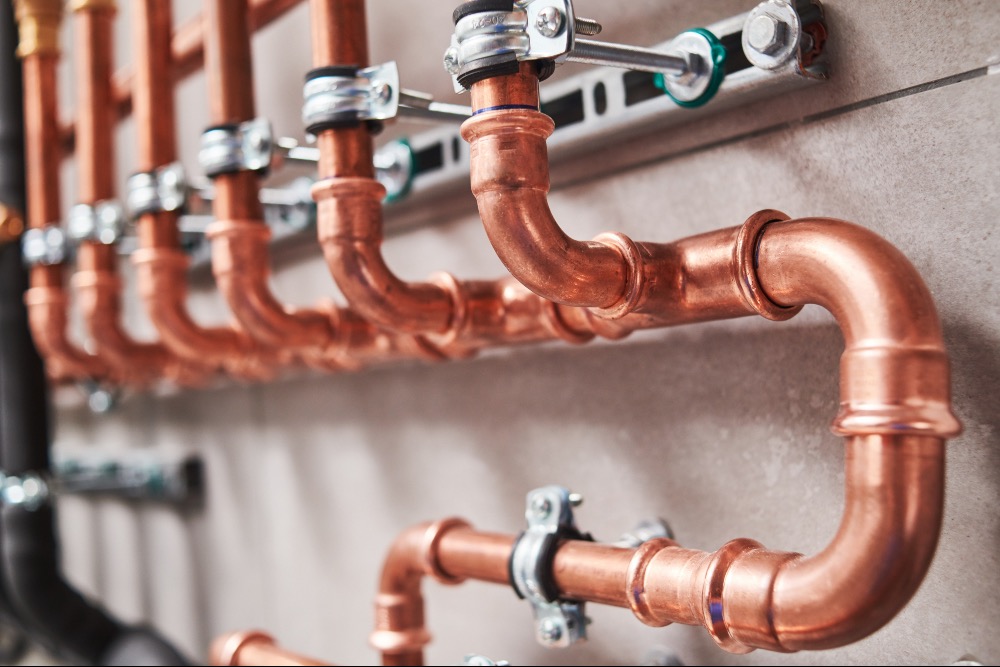
Benefits of using Copper Press fittings
Fast and Easy Installation: Press fittings allow for a quick and easy installation process, requiring little training. Simply insert the pipe into the fitting and crimp.
No Heat Required: Press fittings sit in the "no-heat" category and make themselves a popular choice for heat-free construction sites or DIY projects.
Strong and Reliable Joints: Press fittings provide a strong and reliable joint, as the fitting is crimped onto the pipe, ensuring a secure connection. The O-Ring then gives the leak-proof seal.
Versatility: Press fittings are available in a wide range of sizes and shapes, making them suitable for various plumbing applications.
Clean and Tidy Finish: Press fittings provide a clean and tidy finish, as there is no solder or adhesive residue left on the outside of the fitting.
Factors to consider when selecting Pipe Fittings
The Application: What situation are you going to be using your fittings? Domestic, Commercial, or Industrial?
The Size of the Fitting Required: Not all fittings are made in all sizes. Push fit, for example, doesn't go above 28mm.
The Operating Conditions: Differences in British Standards between products, and even the differences in manufacturer's capabilities will dictate under what conditions their fittings are safe to operate. Always check the technical specification of the fittings and ensure they will work for you.
Requirements of the Job: What is at stake? Does your job need a very secure joint? Can you use heat on-site? For example, Compression Fittings are a great choice for projects where a heat-free joint is preferred or where the installation area is wet. Another example would be that you may be able to get away with Push Fit domestically, but for Commercial applications with higher pressures and more at stake, you may want to rely on a strong and secure End Feed joint.
Your Skill Set: Consider the ease of installation. Are you technical enough to solder an End Feed joint? Or would it be easier for you to go with Compression or Push Fit?
Wrapping Up
Selecting the right copper fittings for your project is crucial for a successful and reliable plumbing system. By understanding the different types of fittings and their applications, you can make an informed decision that suits your specific needs. Whether you're working on a small DIY project or a large commercial installation, the right fittings will ensure a secure and long-lasting connection. It's really important to take the time to properly consider your project's requirements and choose the right fittings that will provide the best results.
Take the Next Step
Ready to get started on your plumbing project? Explore our comprehensive range of copper pipe fittings to find the perfect solution for your needs. Whether you're looking for Compression, End Feed, Solder Ring or Copper Press Fittings, we have you covered. With fast and free shipping, click on the links below to get your fittings now:
Frequently asked questions
What are the benefits of using compression fittings?
Compression fittings are easy to install, versatile, heat-free, suitable for wet conditions, and reusable.
How do end feed fittings work?
End feed fittings work through capillary action, where solder is drawn into the gap between the fitting and the pipe to create a strong, leak-proof joint.
What are solder ring fittings?
Solder ring fittings, also known as pre-soldered copper fittings, come with a ring of solder pre-applied inside the fitting for easy installation.
How do copper push fit fittings work?
Copper push fit fittings work by using a push-fit mechanism, where the pipe is simply pushed into the fitting to create a secure and leak-proof joint.
What are the benefits of using copper press fittings?
Copper press fittings offer fast and easy installation, no heat requirement, strong and reliable joints, versatility, and a clean and tidy finish.
What factors should I consider when selecting copper fittings for my project?
Consider the application, size of the fitting, operating conditions, requirements of the job, and your skill set when selecting copper fittings for your project.
Any more questions?
If you have any queries or questions about the products we sell, or even your next project, give us a shout! We'll try our best to give you a hand.

